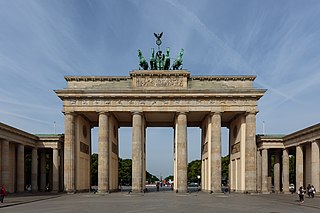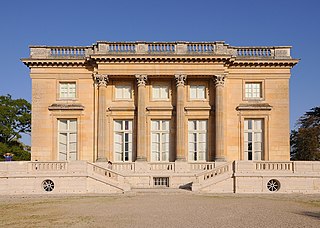This article needs additional citations for verification .(December 2022) |
| |||
|---|---|---|---|
| Buildings and structures +... |
The year 1778 in architecture involved some significant events.
This article needs additional citations for verification .(December 2022) |
| |||
|---|---|---|---|
| Buildings and structures +... |
The year 1778 in architecture involved some significant events.


Augustus Welby Northmore Pugin was an English architect, designer, artist and critic with French and Swiss origins. He is principally remembered for his pioneering role in the Gothic Revival style of architecture. His work culminated in designing the interior of the Palace of Westminster in Westminster, London, and its renowned clock tower, the Elizabeth Tower, which houses the bell known as Big Ben. Pugin designed many churches in England, and some in Ireland and Australia. He was the son of Auguste Pugin, and the father of Edward Welby Pugin, Cuthbert Welby Pugin, and Peter Paul Pugin, who continued his architectural and interior design firm as Pugin & Pugin.

Greek Revival architecture was a style that began in the middle of the 18th century but which particularly flourished in the late 18th and early 19th centuries, predominantly in northern Europe, the United States, and Canada, as well as in Greece itself following its independence in 1821. It revived many aspects of the forms and styles of ancient Greek architecture, in particular the Greek temple. A product of Hellenism, Greek Revival architecture is looked upon as the last phase in the development of Neoclassical architecture, which was drawn from Roman architecture. The term was first used by Charles Robert Cockerell in a lecture he gave as an architecture professor at the Royal Academy of Arts in London in 1842.
The year 1877 in architecture involved some significant events.
The year 1839 in architecture involved some significant architectural events and new buildings.

The year 1811 in architecture involved some significant events.
The year 1838 in architecture involved some significant architectural events and new buildings.
The year 1881 in architecture involved some significant architectural events and new buildings.
The year 1845 in architecture involved some significant architectural events and new buildings.
The year 1774 in architecture involved some significant events.
The year 1809 in architecture involved some significant architectural events and new buildings.
The year 1857 in architecture involved some significant events.
William Wilkins was an English architect, classical scholar and archaeologist. He designed the National Gallery and University College London, and buildings for several Cambridge colleges.

Neoclassical architecture, sometimes referred to as Classical Revival architecture, is an architectural style produced by the Neoclassical movement that began in the mid-18th century in Italy, France and Germany. It became one of the most prominent architectural styles in the Western world. The prevailing styles of architecture in most of Europe for the previous two centuries, Renaissance architecture and Baroque architecture, already represented partial revivals of the Classical architecture of ancient Rome and ancient Greek architecture, but the Neoclassical movement aimed to strip away the excesses of Late Baroque and return to a purer, more complete, and more authentic classical style, adapted to modern purposes.
The year 1813 in architecture involved some significant events.
The year 1829 in architecture involved some significant events.
The year 1735 in architecture involved some significant events.
The year 1775 in architecture involved some significant events.

George Ingham Barnett (1815–1898) was an architect from St. Louis, Missouri. He was called "The Dean of St. Louis Architecture" for his contributions to the buildings of St. Louis as well as for his influence on other architects in the United States.